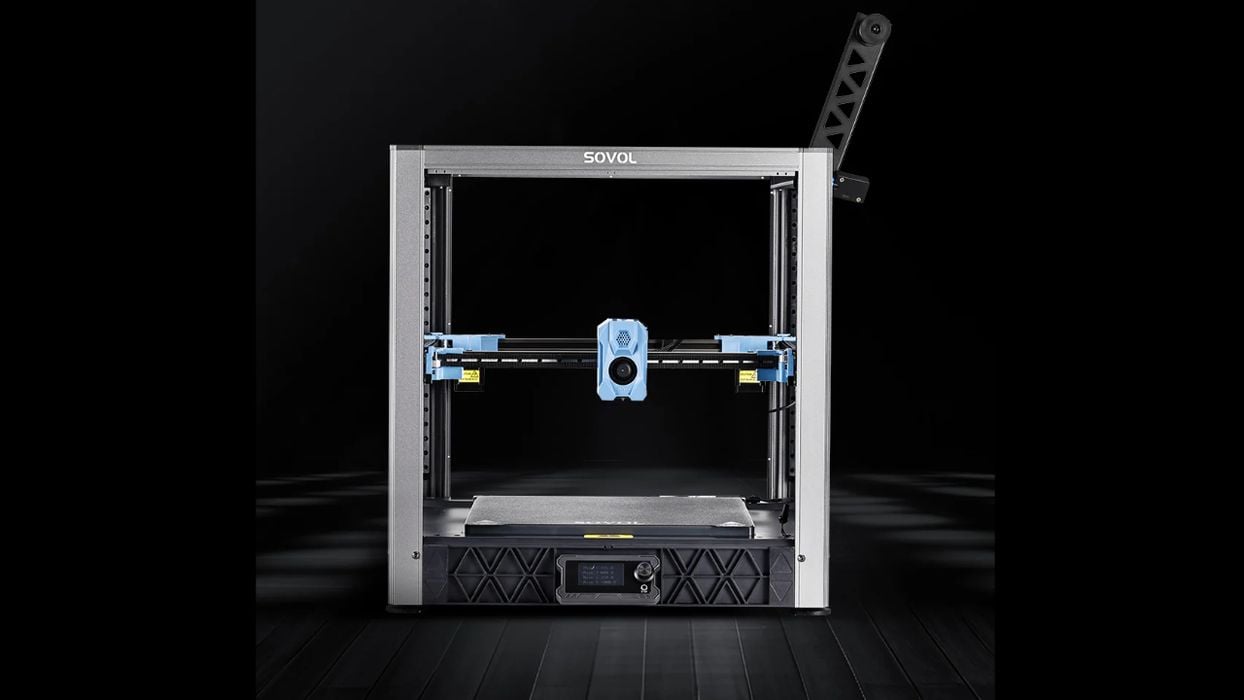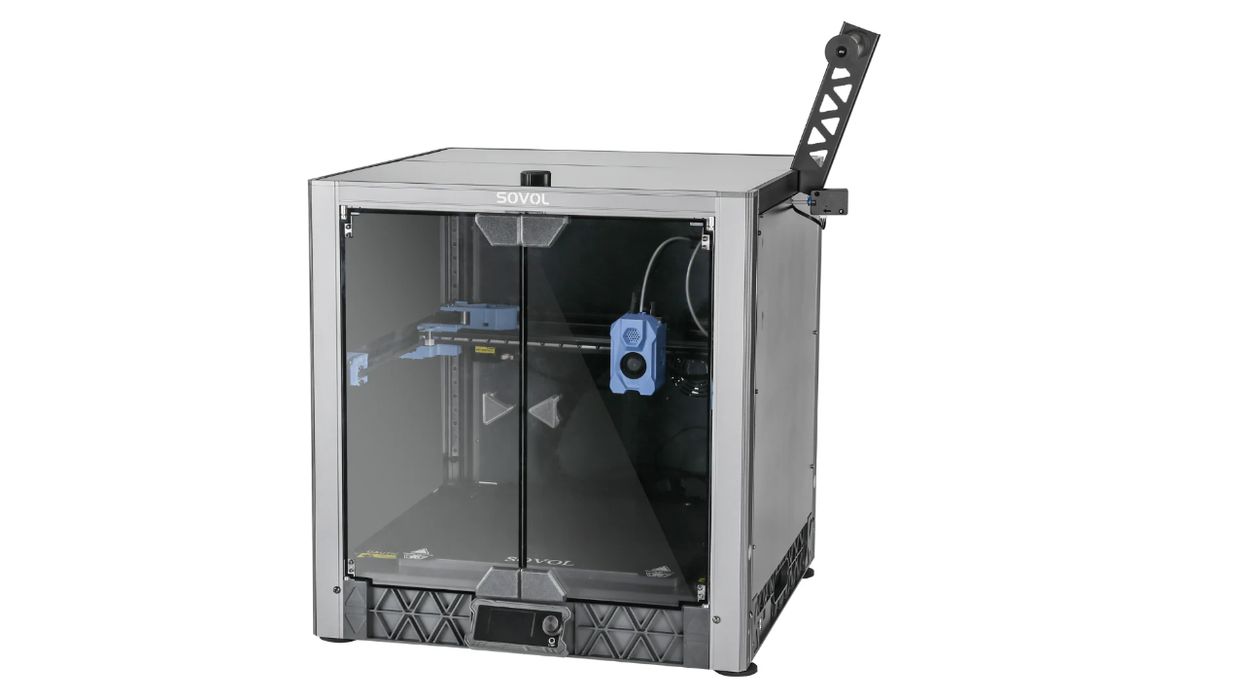
Sovol launched what might become a very popular desktop 3D printer model: the SV08.
Sovol has released a number of interesting devices over the past two years, and the new SV08 is no exception. This device is incredibly powerful, but carries a very low price. That’s a combination that’s been successful in the past, and should be here as well.
Let’s look at the specifications for the SV08:
- Massive build volume of 350 x 350 x 345 mm
- CoreXY motion system
- ALL axes use linear rails
- Seven axes of motion (I’ll explain this in a bit)
- Shipped as a kit, with easy assembly
- 40,000 mm/s/s acceleration
- Single toolhead for 1.75mm filament
- Klipper high-speed firmware
- Ceramic heating block
- AC-powered high speed heating print surface
- Networkable with remote control app
- Nozzle sensor for automated Z-offset calibration
- Enhanced cooling system
- Automated bed leveling
- Fully open source, easy to modify
All of this is available at a starting price of only US$499, which is quite low for a large machine with these advanced features.
However, there are some optional features to consider:
- Webcam
- Enclosure
- HDMI5 touchscreen
- Swappable nozzles

The most expensive configuration is the SV08 with touchscreen and enclosure, priced at US$719. This puts it at a price comparable to the Bambu Lab P1P.
Sovol doesn’t state the flow rate limit on this machine, but it had better be high to match the print speed, which is said to be in the 700mm/s range.
The say the SV08 can print a competent #3DBenchy model in only 11:30, which is very fast. Most other high speed machines are in the teens of minutes, and only specialized machines seem to break the ten minute barrier. Here the SV08 comes dangerously close to that achievement.
Back to the seven axes.
This is perhaps the most unusual feature on the SV08: each of the four pillars making up the Z-axis are independently motorized. These four motors can tilt the plane of the XY axis against the Z-axis.

Why do so? It eliminates any manual leveling required. Typical automated leveling works but only if the bed is roughly level. Here the SV08 is able to compensate against wildly tilted beds, and then combine that with the normal bed leveling procedure.
This is quite interesting, but I am unsure of the value of this complex system: would the price of four motors be beneficial against the effort to manually rough-level the bed? I’m not so sure. Nevertheless, the four motors are already priced into the machine’s cost, which is still quite low.
The SV08 is almost certain to become quite popular, as it echoes many of the features of the powerful Voron machines, yet is available in a mostly-assembled package at a very good price.
Via Sovol
